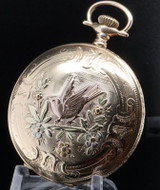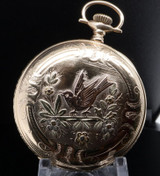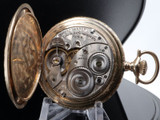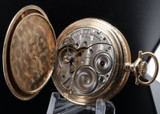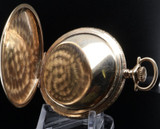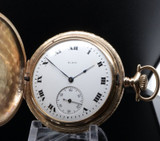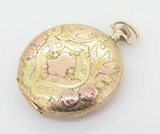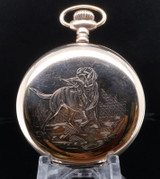Description
C.1920 Elgin Solid 14K Multi Colour Gold 12s Grade 314 15J Pocket Watch
C.1920 Elgin Solid 14K Multi Colour Gold 12s Grade 314 15J Pocket Watch . The stunning white enamel dial with black roman numerals, sub seconds, outer minute tracking in black with matching blue steel hands is signed Elgin. The stem wind 12s 15 ruby jewel lever 3/4 plate movement with breguet hairspring is working well, signed Elgin Natl Watch Co 22215908. The 14ct solid multi colour gold hunter 48mm hunter case with double snap back is in wonderful original condition, case is hallmarked Roy 14K.
Dont miss this one, total weight 69.9 grams.
HNCO is one of the leading sellers of Pocket watches on eBay Australia, with over 100+ Pocket watches on offer. We are constantly adding to ever increasing range and have a large assortment of American Railroad Grade Pocket Watches.
American Railroad Pocket watches were amongst the highest grade watches made, having been made for the railways makes them a great choice to use every day, mainly for their durability over time. Their lower production quantities and of course their high grade movements make them also a great gift or investment.
A typical railroad's requirements for a pocket watch in the early 20th century might include:
* Only American-made watches may be used (depending on availability of spare parts).
* Only open-faced dials, with the stem at 12 o'clock.
* Minimum of 17 functional jewels in the movement.
* Size 16 or 18 only.
* Maximum variation of 30 seconds (approximately 4 seconds daily) per weekly check.
* Watch adjusted to at least five positions: Face up and face down (the positions a watch might commonly take when laid on a flat surface); then crown up, crown pointing left, and crown pointing right (the positions a watch might commonly take in a pocket). Occasionally a sixth position, crown pointing down, would be included.
* Adjusted for severe temperature variance and isochronism (variance in spring tension)
* Indication of time with bold legible Arabic numerals, outer minute division, second dial, heavy hands.
* Lever used to set the time (no risk of inadvertently setting the watch to an erroneous time, when winding the watch with the stem)
* Breguet balance spring
* Micrometer adjustment regulator
* Double roller escapement
* Steel escape wheel
* Anti-magnetic protection (after the advent of diesel-electric locomotives)
The minimum requirements were raised several times as watch-making technology progressed, and the watch companies produced newer, even more reliable models. By WW2, many railroads required watches that were of a much higher grade (as many as 23 jewels, for example) than those made to comply with the original 1891 standard.
_gsrx_vers_1536 (GS 9.4 (1536))

